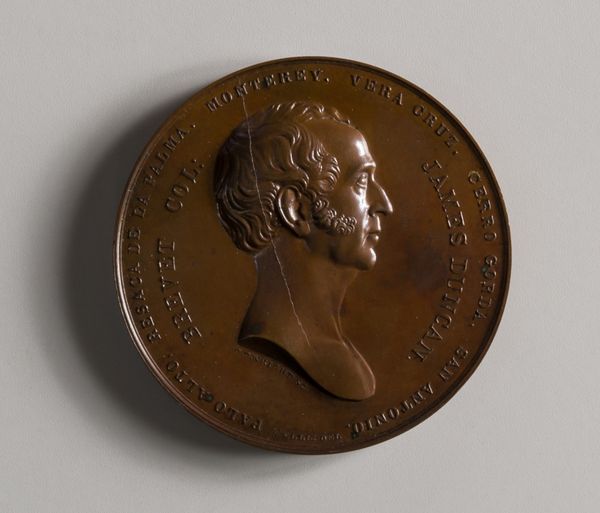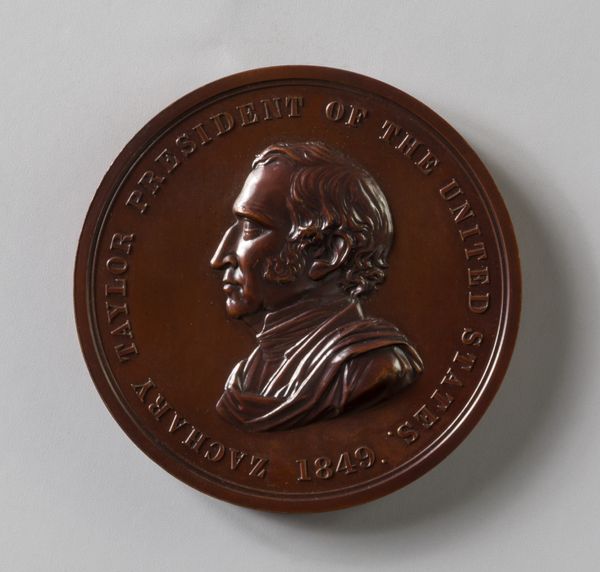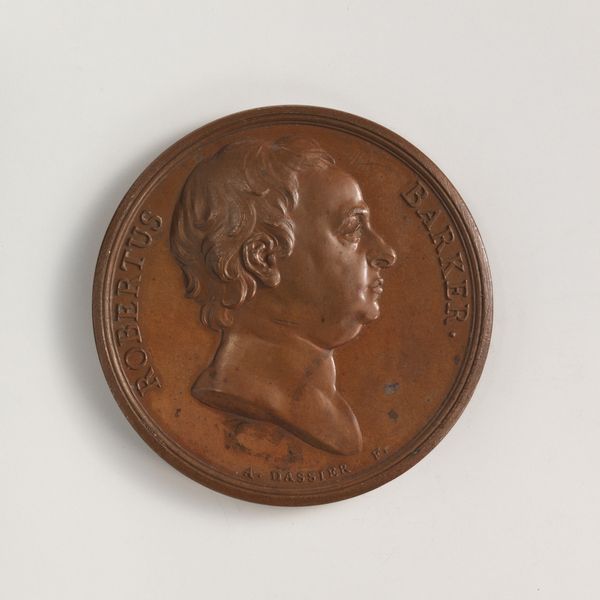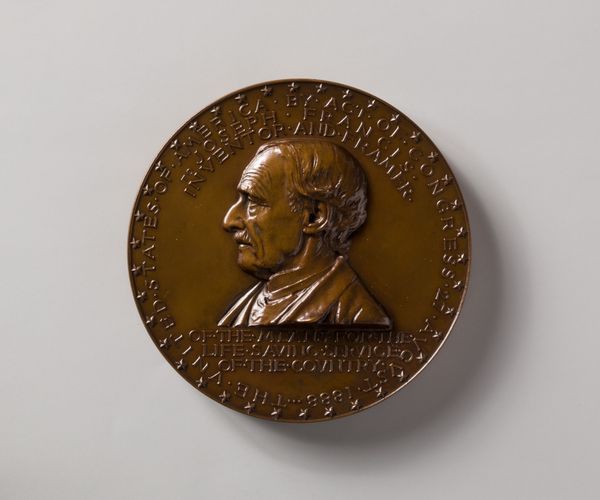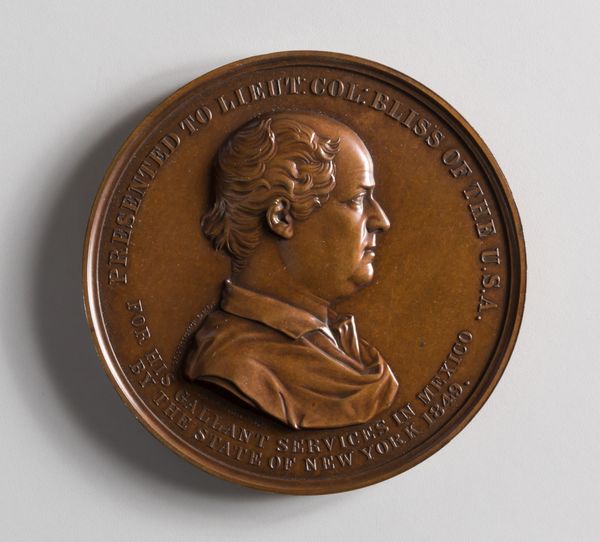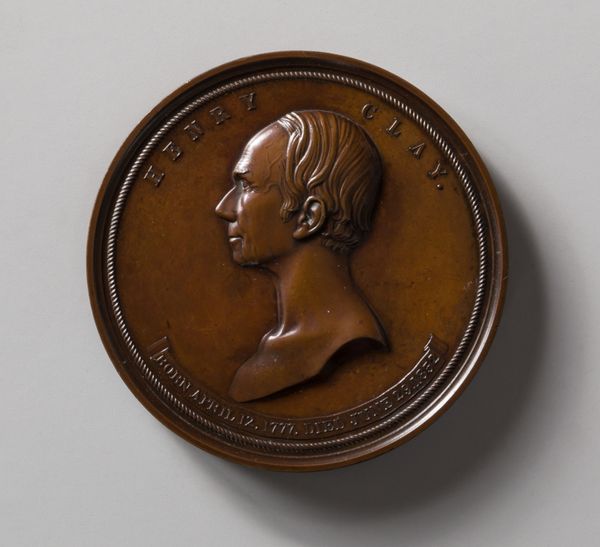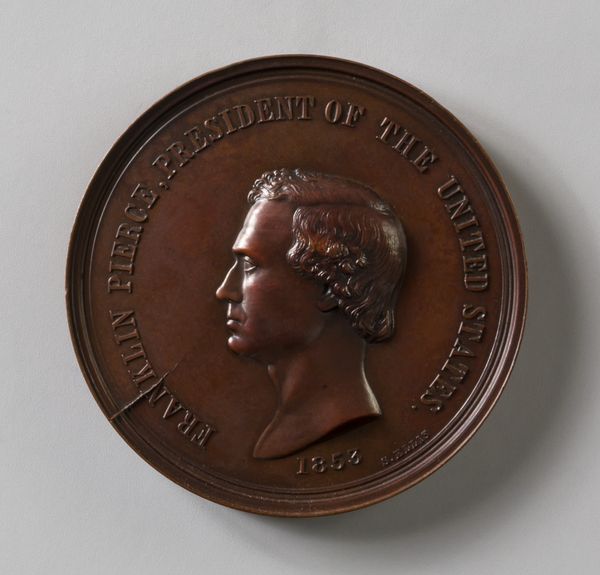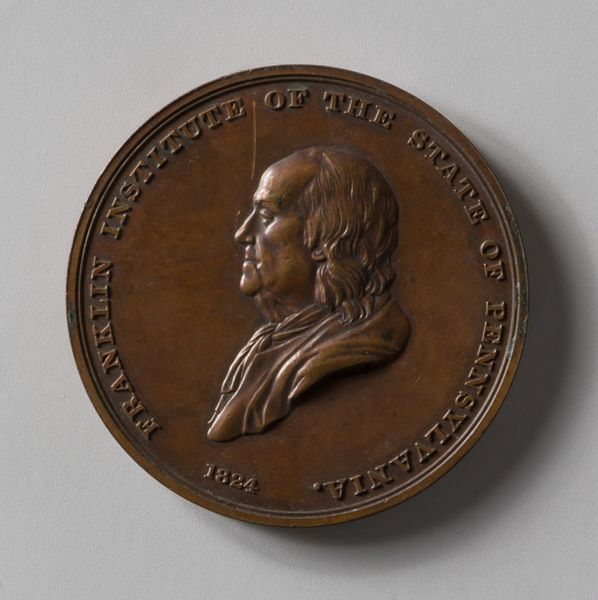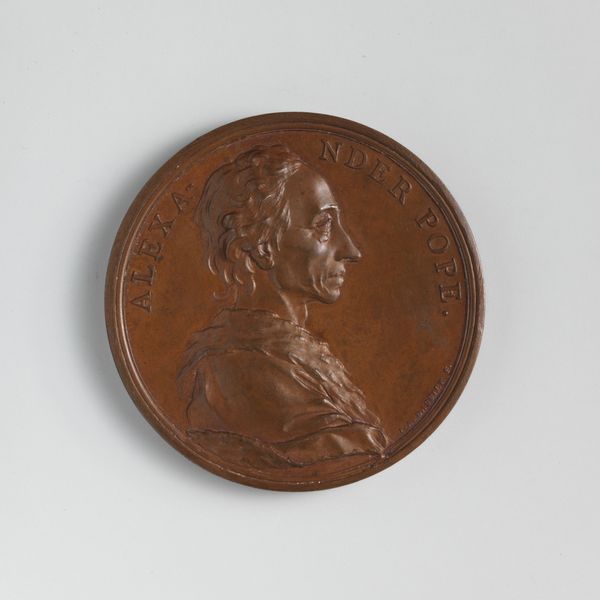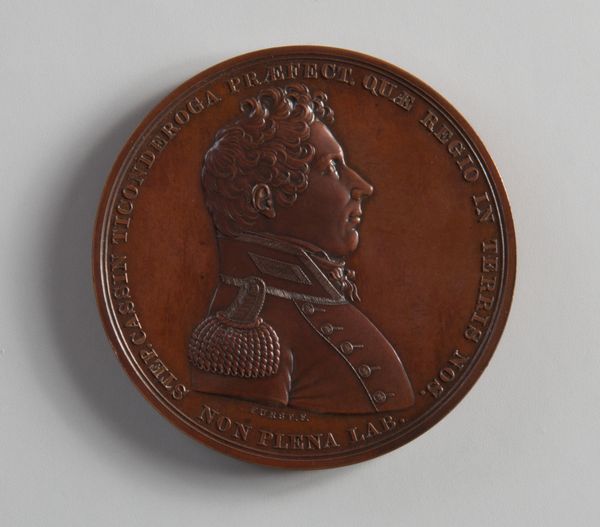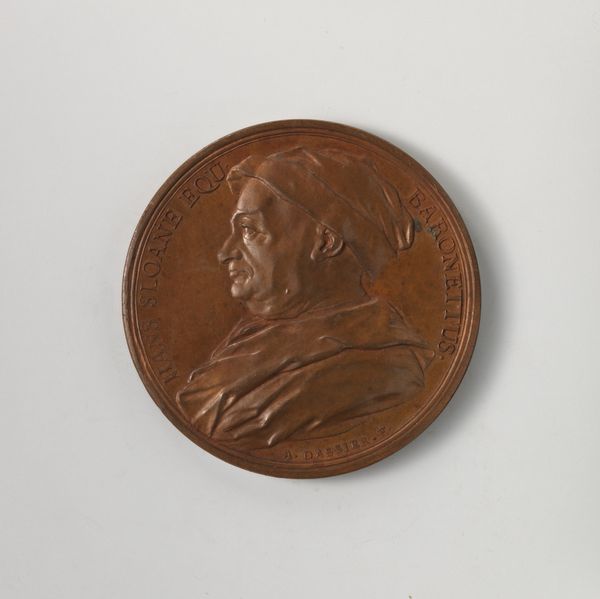
metal, relief, bronze, sculpture
#
portrait
#
metal
#
sculpture
#
relief
#
bronze
#
sculpture
#
history-painting
#
profile
Dimensions: Diam. 2 7/16 in. (6.2 cm)
Copyright: Public Domain
This is a bronze medal of James Knox Polk, made by Franklin Peale, sometime in the mid-19th century. It is a strong example of how traditional techniques were applied in the era of industrialization. The medal’s materiality speaks volumes. Bronze, an alloy of copper and tin, was commonly used for commemorative objects, due to its durability and capacity to capture fine detail through casting. Peale, from a family of accomplished artists, clearly possessed the skill to model the portrait in high relief, with a great likeness of President Polk. Consider how this object would have been produced: a painstaking process that would have begun with a clay or wax model. Then, using the lost-wax casting method, the medal would have been created in multiples, offering a lasting image of the President, both celebrating and disseminating the power of the young American state. Medals such as this reflect the intersection of art, craft, and political symbolism. It asks us to consider how materials and making processes intertwine with the social and cultural values they represent.
Comments
No comments
Be the first to comment and join the conversation on the ultimate creative platform.
